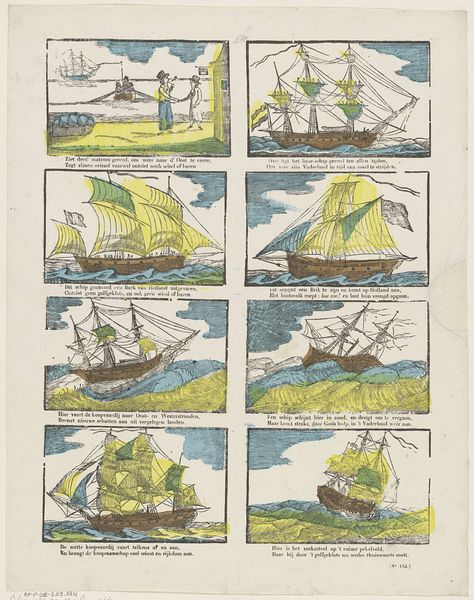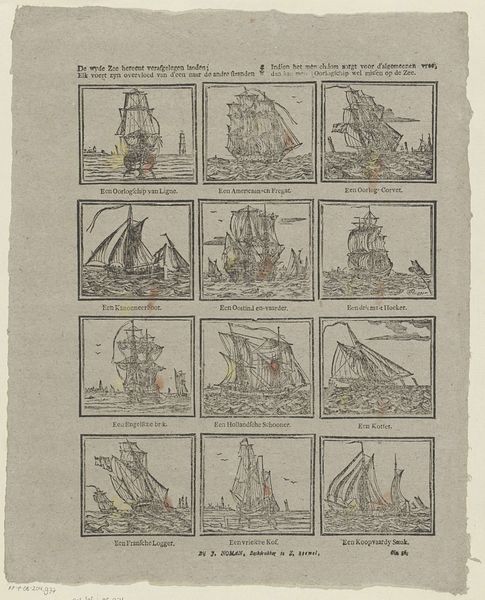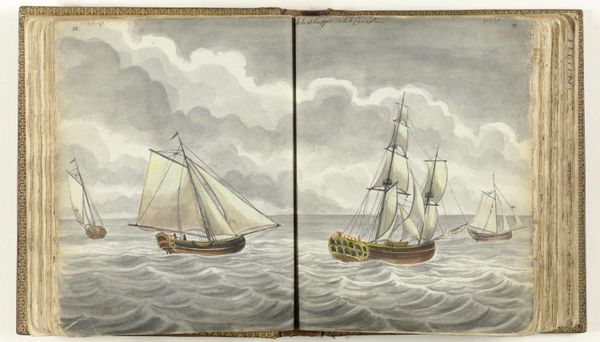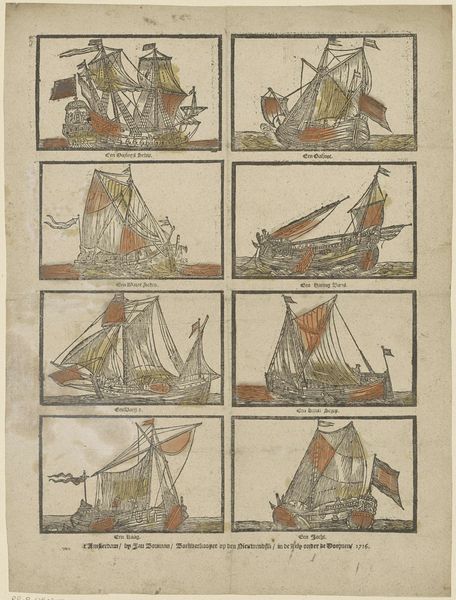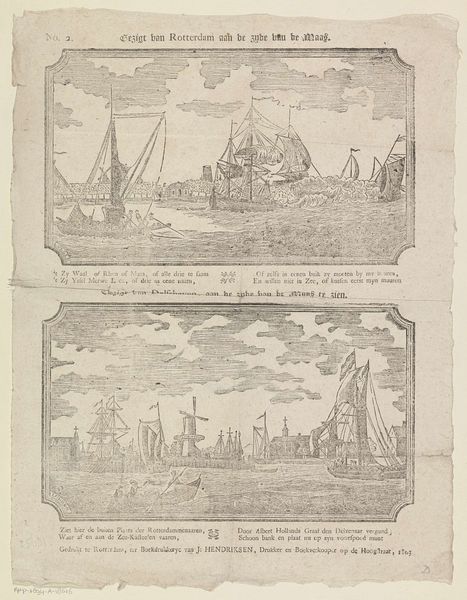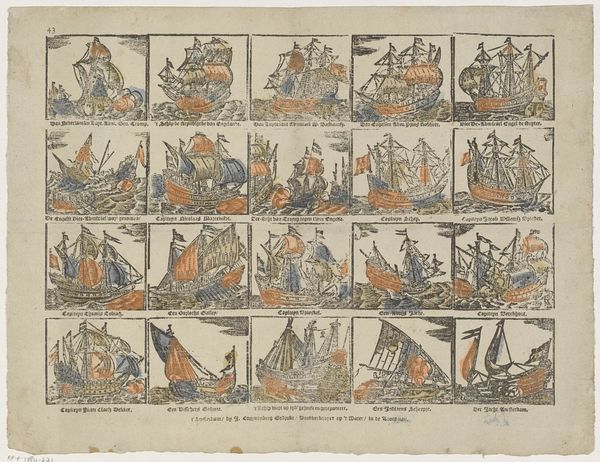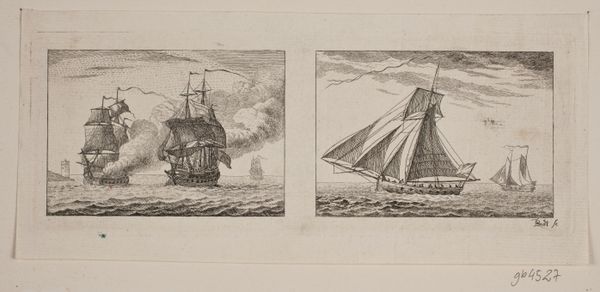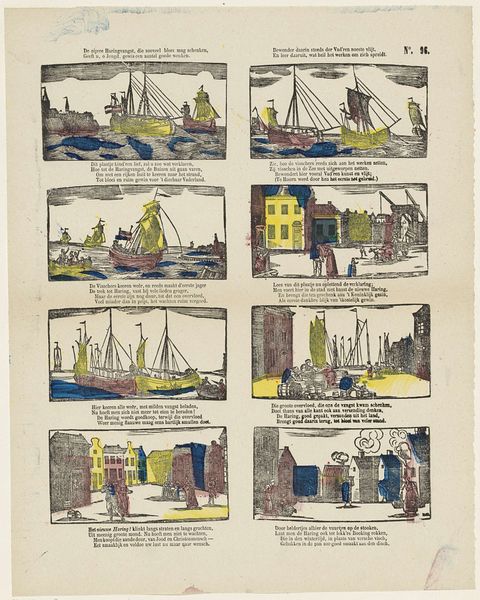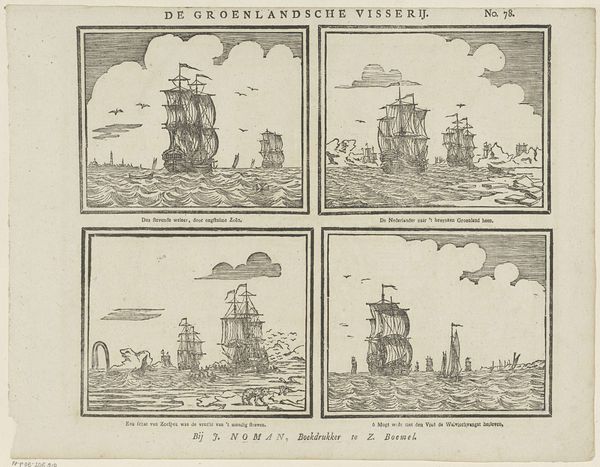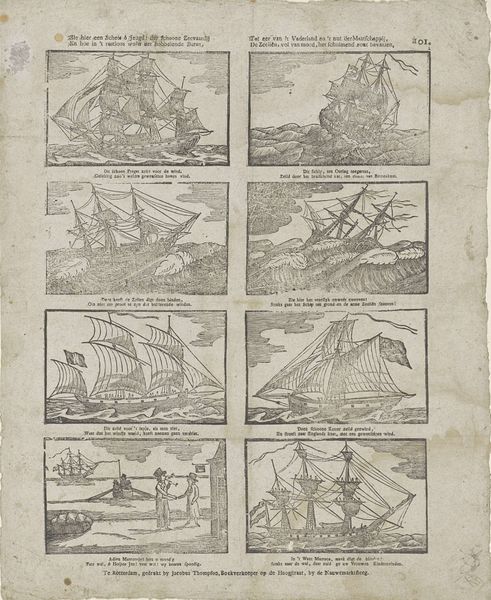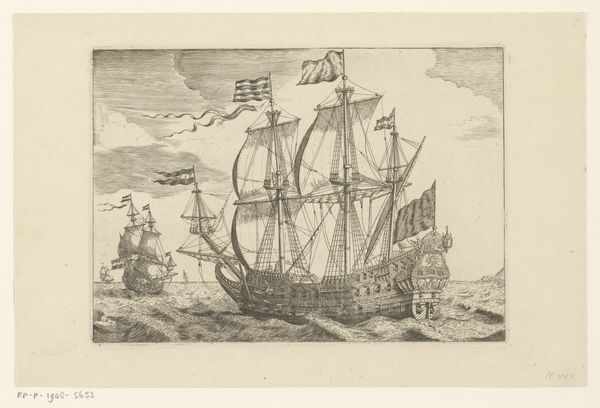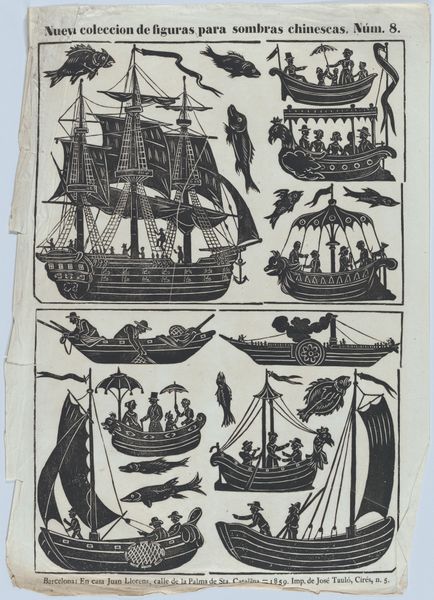
print, woodcut, engraving
#
dutch-golden-age
# print
#
landscape
#
woodcut
#
watercolour illustration
#
engraving
Dimensions: height 320 mm, width 390 mm
Copyright: Rijks Museum: Open Domain
Curator: This engraving, entitled "De Groenlandsche Visschery," made sometime between 1856 and 1900, presents a rather intriguing visual record. Editor: Intriguing, yes, but also quite sobering. The multiple scenes within a single print—they feel episodic, almost like a comic strip documenting Dutch whaling expeditions, revealing a chapter of colonial impact. Curator: Indeed. Created by Glenisson & Zonen, this woodcut provides insight into the Dutch Golden Age and its less glamorous activities. It exemplifies how crucial imagery was in shaping public perception around colonial trade. Editor: Look closely and it becomes apparent: these expeditions weren't simple commerce. It brings the exploitation of both nature and indigenous populations into view, challenging idealized representations of historical expansion. The watercolor-like rendering gives this document a certain charming veneer, but cannot conceal this print's sinister context. Curator: Exactly. Prints like this often romanticized the “adventure” and downplayed the environmental and human costs. These visuals fueled popular support by projecting commercial success and minimizing darker sides. Note also the placement within a broader Dutch landscape tradition, embedding expansion within ideas of progress and national identity. Editor: How this imagery served specific political and economic purposes is what fascinates me. Considering gender dynamics, how were women implicated in this system—both through the domestic consumption of whale products and in relation to the men on these dangerous, faraway whaling voyages? Curator: Those are critical questions, revealing layers often ignored. Investigating these absences, what stories do they hold about women's participation and exclusion? It demands recognizing the limits of what this print overtly shows. Editor: Ultimately, I find it a powerful yet disquieting testament. It's a valuable source in understanding not only historical trade practices but also the complex intersectional dimensions. Curator: Absolutely. By studying the context and challenging the overt narratives, it challenges our perspectives on colonial ventures and the art that documented and defended them.
Comments
No comments
Be the first to comment and join the conversation on the ultimate creative platform.

